This article was medically reviewed by Shari Forschen, NP, MA. Shari Forschen is a Registered Nurse at Sanford Health in North Dakota. Shari has worked in healthcare since 1996 and her expertise lies in acute care bedside nursing on a medical oncology floor. She received her degree from Medcenter one College of Nursing in 2003 and her Family Nurse Practitioner Masters from the University of North Dakota in 2014. Shari is a member of the American Nurses Association.
There are 9 references cited in this article, which can be found at the bottom of the page.
This article has been viewed 70,689 times.
There are several ways in which you can relieve ovarian cyst pain. Once the diagnosis of ovarian cyst(s) is confirmed, you can try taking pain medications (from over-the-counter to prescription strength pain medications). You may also consider surgery for cyst(s) that remain unresolved after two to three menstrual cycles, as removing the cyst(s) can relieve the pain. Birth control pills may be considered as a means to prevent further cyst formation. However, they are unable to treat any ovarian cyst(s) that you may currently have.
Steps
Using Pain Medications
-
1Take an NSAID to relieve pain. The first-line pain treatment for ovarian cyst(s) are NSAID pain medications. These can be obtained over-the-counter at your local pharmacy or drugstore. They can also be received in stronger formulations by asking your doctor for a prescription, if the over-the-counter (OTC) versions are insufficient to relieve your pain.[1]
- An example of an NSAID medication is ibuprofen (Advil, or Motrin). The typical dose is 400 – 600mg every four to six hours as needed. Follow the dosing instructions on the bottle.
- Another NSAID option is naproxen (Aleve). This is available over-the-counter, or as a stronger version that is available via a prescription from your physician.
-
2Consider a narcotic pain-killer for severe pain. In some severe cases, a narcotic pain-killer is necessary. The first-line narcotic used in the treatment of ovarian cyst pain is morphine, an opiate.[2]
- Narcotics are the last option when it comes to pain relief. In light of the national epidemic of narcotic abuse/misuse in the United States, opiate medication should be only taken in an emergency room setting or for the shortest possible amount of time.
- Additionally, if you have a substance abuse history and previous addiction to illicit or prescription medication, the decision to utilize this should be weighed against the risks of harm and/or relapse.
- Morphine for ovarian cyst pain is most often given via an IV, and in a hospital setting.
- This is because, to warrant this strength of medication, the pain is usually very severe, resulting in a visit to the Emergency Room.
- Initially, a small dose of Morphine is administered via IV; the dose is increased incrementally until the pain gets under control.
- Morphine is also a very safe option within the hospital setting. It can readily be reversed with Naloxone should any adverse reactions occur.
Advertisement -
3Confirm that an ovarian cyst is the source of your pain, if you are not sure. If you are experiencing abdominal or pelvic pain, it is important to see your doctor and to receive a physical examination, an ultrasound, and any other necessary tests to confirm that the source of your pain is indeed an ovarian cyst(s).[3] Many other conditions may cause pain similar to ovarian cyst(s), so it is important to see your doctor to confirm that is indeed an ovarian cyst(s) that is the source of your pain.
- Your doctor may perform a pelvic ultrasound in which a wand-like device is inserted into your vagina and uses high-frequency sound waves to create a picture of your ovaries on a video screen. This imaging test can help your doctor confirm the presence of a cyst, identify its location and determine whether it's solid, filled with fluid or mixed.[4]
Opting for Surgery
-
1Talk to your doctor about surgery if your ovarian cyst pain is persistent.[5] For acute (short-term) ovarian cyst pain, a pain medication may be sufficient to relieve the pain until symptoms resolve. If the pain persists for two to three menstrual cycles, if it is large, doesn't look like a functional cyst, or is growing, you will likely be advised to proceed with surgery to have your ovarian cyst(s) removed.
- The vast majority of ovarian cysts are benign.[6]
- Either just the cyst can be removed from the ovary, or the entire ovary can be removed. The extent of the surgery will depend upon the number of cysts present on the ovary, as well as the age of the patient and reproductive considerations. (The surgery is generally more extensive following menopause.)
- Fortunately, if the entire ovary needs to be removed surgically, there is still the ovary on the other side, so the woman does not need to lose her fertility by having a surgical procedure performed.
-
2Have your ovarian cyst removed if there is any suspicion that it may be cancerous.[7] Another key factor in deciding whether or not surgery is needed as a treatment for ovarian cyst(s) is assessing the cyst(s) for the possibility that they may one day become cancerous. If there is the risk of them developing into a cancer, your doctor will advise that surgery be performed to prevent this from occurring.
- When an ovarian cyst(s) is removed due to the possibility of it becoming cancerous, it is advised to have the fallopian tubes and uterus removed in addition to both ovaries.
- This, of course, has reproductive implications that need to be discussed with your doctor, because having all of these structures removed will make you infertile.
-
3Try "watchful waiting" if the cyst(s) is not immediately worrisome.[8] If your ovarian cyst(s) is not yet showing signs of persistent pain and/or a risk for cancer, your doctor will likely advise that you try the approach of "watchful waiting." This consists of using pain medications as needed to relieve your ovarian cyst pain, while hoping that the cyst ultimately resolves itself without the need for medical intervention. You must, however, commit to thorough follow-up with serial ultrasounds.[9] This will ensure the cysts don't get worse.
- If the cysts do not improve with time, surgery may be advised.
Taking Birth Control Pills
-
1Take birth control pills to prevent the formation of new cysts.[10] Although birth control pills cannot help to control the pain of any cyst(s) that are currently present on your ovaries, the pills can serve to prevent any new cysts from forming. As such, doctors advise patients with ovarian cyst(s) to begin hormonal birth control pills as a method to prevent the problem from getting any worse than it currently is.
- You can receive a prescription for birth control pills from your family doctor.
- The pills are taken once a day for three weeks, followed by one week off (or one week of "sugar pills"). This cycle repeats monthly.
- The hormones in the birth control pills replace the hormones that are normally produced by your ovaries.
- The ovaries then temporarily "shut down" hormone production while you are on the pill, and this greatly reduces the risk of any new cysts forming.
-
2Ensure that you do not have any medical conditions that prevent you from taking birth control pills.[11] If you have breast cancer, uterine cancer, or another cancer that is "fed" by estrogen, you will be advised not to take hormonal birth control pills. If you are a current smoker and older than 35 years old, you will also be advised against taking the pills due to a heightened risk of developing blood clots. Similarly, if you have another bleeding disorders (such as a hereditary bleeding disorder), you should not take the pill due to the risk of blood clots.
- Your doctor will go over your medical history with you to determine the safety of taking hormonal birth control pills.
- For the majority of people, it is completely safe to take the pills.
-
3Continue taking birth control as a prophylactic measure. Taking birth control pills will reduce the chance of developing new cysts in the future. In addition, it can reduce your chances of developing ovarian cancer. In fact, the longer you take birth control pills, the more your risk is reduced.
Trying Natural Pain Relief Strategies
-
1Consume ginger and/or turmeric for their anti-inflammatory properties.[12] Rather than always opting for medical anti-inflammatories, such as Ibuprofen (Advil, Motrin), another option for less severe pain is to add natural ingredients to your diet. Examples include ginger and turmeric. Both ginger and turmeric can be added as spices to foods, and you can make them part of your home recipes to decrease the painful inflammation that can be associated with ovarian cysts.
-
2Use heat. Applying heat over your abdominal/pelvic area (over the source of the pain) can help to relax your muscles and to ease the pain. Try using a hot water bottle or a heating pad for 15 minutes at a time, as needed, to relieve ovarian cyst pain.
- You may also opt for a hot bath as a means to apply heat to the area.
-
1See an acupuncturist or a hypnotist. Although acupuncture and hypnosis are not generally recommended by traditional western medical doctors, some people find them helpful with pain management (such as helping with the pain of ovarian cysts). Acupuncturists work with needles to correct the flow of energy through the body, with the ultimate goal of relieving (or diminishing) pain. Hypnotists work to decrease your mind's perception of pain.[13]
-
2Try distracting yourself from the pain. Find an activity you can do that will distract you from the pain from your cyst. Reading a good book, using guided imagery, playing a video game, doing something crafty, or doing anything that will take your mind off the pain can help.
- Try deep breathing or meditation to cope with your pain.
References
- ↑ https://www.ncbi.nlm.nih.gov/books/NBK539572/
- ↑ https://emedicine.medscape.com/article/255865-medication
- ↑ http://www.mayoclinic.org/diseases-conditions/ovarian-cysts/basics/treatment/con-20019937
- ↑ http://www.mayoclinic.org/diseases-conditions/ovarian-cysts/basics/tests-diagnosis/con-20019937
- ↑ http://www.mayoclinic.org/diseases-conditions/ovarian-cysts/basics/treatment/con-20019937
- ↑ http://pubs.rsna.org/doi/full/10.1148/radiol.10100213
- ↑ http://www.mayoclinic.org/diseases-conditions/ovarian-cysts/basics/treatment/con-20019937
- ↑ http://www.mayoclinic.org/diseases-conditions/ovarian-cysts/basics/treatment/con-20019937
- ↑ https://online.epocrates.com/diseases/66041/Ovarian-cyst/Treatment-Approach
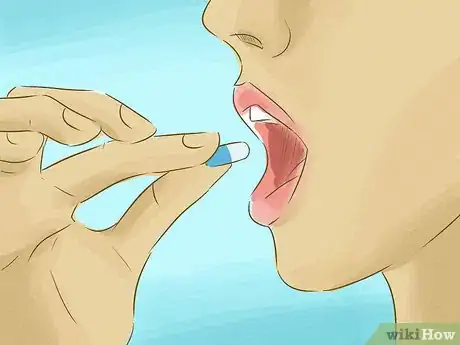
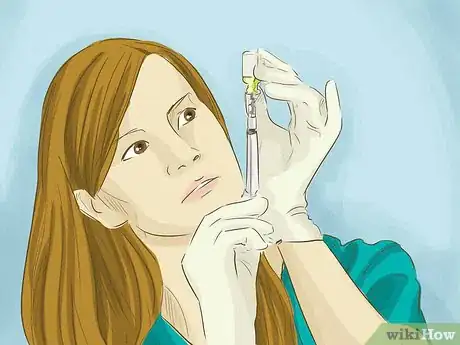

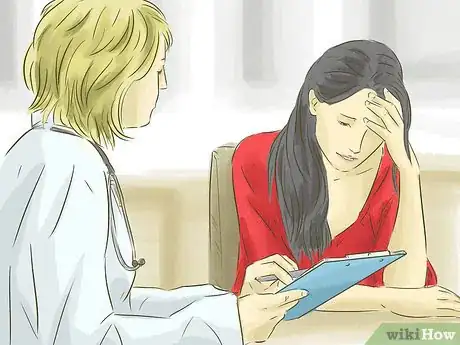
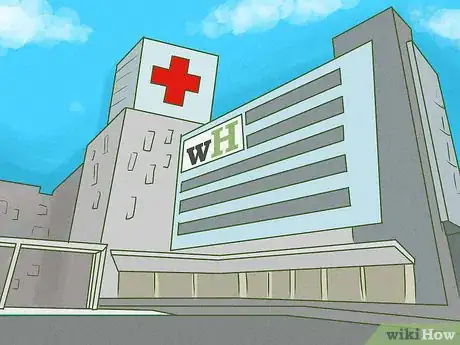
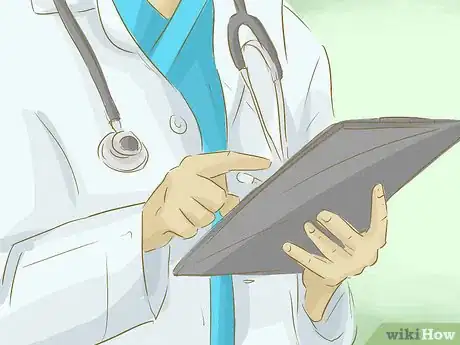
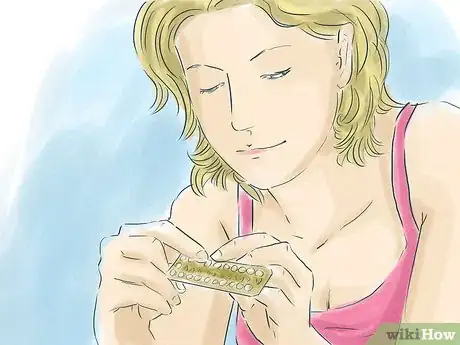




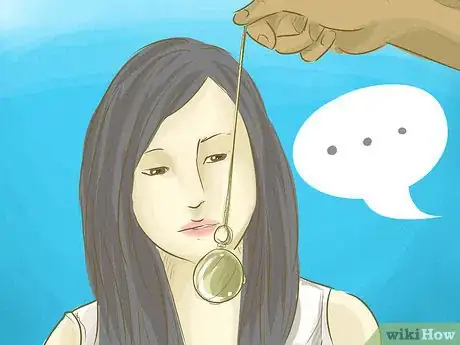

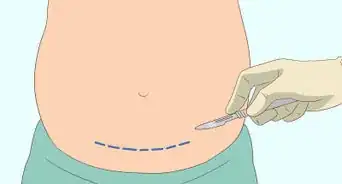
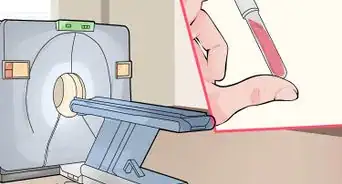
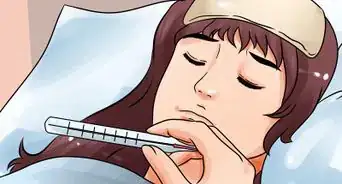
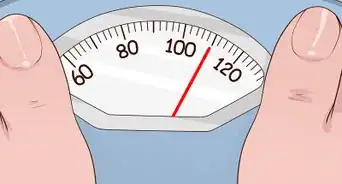

-Step-11.webp)
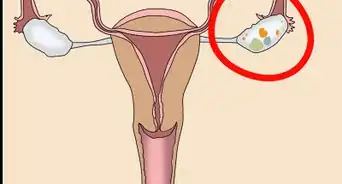
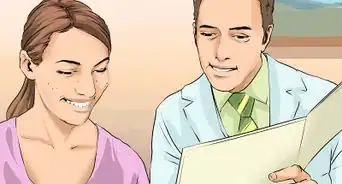
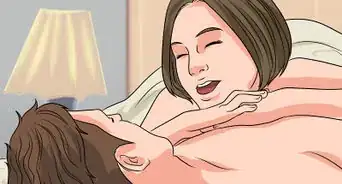
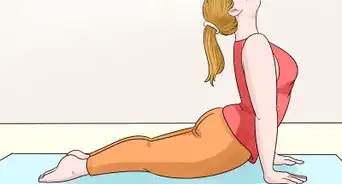

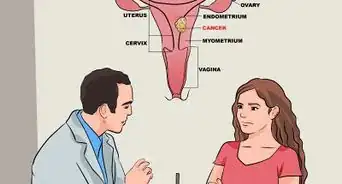















































Medical Disclaimer
The content of this article is not intended to be a substitute for professional medical advice, examination, diagnosis, or treatment. You should always contact your doctor or other qualified healthcare professional before starting, changing, or stopping any kind of health treatment.
Read More...